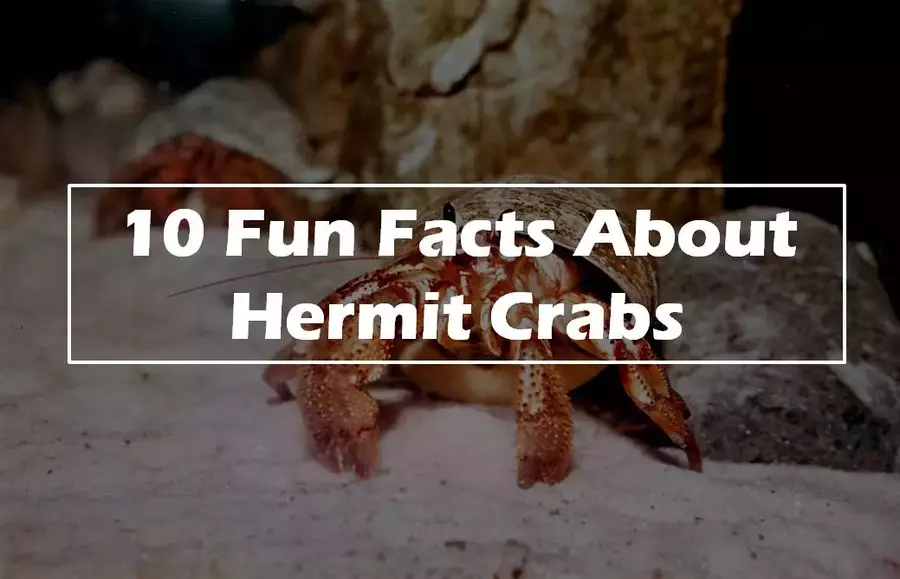Hermit crabs are fascinating and incredible creatures that are loved by both kids and adults alike. With their unique habits and behaviors, they have earned the title of nature’s tiny adventurer. From their mobile homes to their surprising social lives, hermit crabs offer a world of wonder. In this article, we’ll explore the fun facts about hermit crabs that will make you amazed by these cute crustaceans.
10 Fun Facts About Hermit Crabs are:-
1. Shell Swapping
One of the most common facts about hermit crabs is their habit of living inside empty shells. These empty shells are mostly of snails. As they grow, they need to find larger shells as the body keeps increasing in size. They search for suitable shells and perform a quick shell swap. They move into a new home and leave their old one. This constant house-hunting behavior adds an element of curiosity to these tiny creatures. That’s why if you are keeping hermit crabs as pets, you should provide some extra shells in the hermit crab tank.
2. Teamwork in Shell Selection
Hermit crabs exhibit teamwork when they need a new shell. Several crabs may gather around a shell, inspecting it and trying it on for size. If a crab finds a suitable shell but doesn’t need it, it will leave it behind for another crab that needs it. They show this cooperative behavior to assist one another. They also fight each other for the shell. The teamwork phenomenon of hermit crabs teaches us life lessons.
3. Recycling Experts
Hermit crabs are the ultimate recyclers of the seashore. They reuse empty shells left behind by other marine creatures, especially snails. They use the shells as their protective homes. By reusing shells, hermit crabs play an important ecological role, contributing to the balance of marine ecosystems.
4. Land and Sea Crab
Hermit crabs have the ability to live both on land and in water. There are two types of hermit crabs and they are aquatic hermit crabs and land hermit crabs. The aquatic crabs are exclusively marine. Hermit crabs are primarily aquatic but often venture onto land, where they scavenge for food and explore their surroundings. This unique dual lifestyle makes them adaptable creatures, allowing them to inhabit a wide range of coastal habitats. The land crabs also need water for breeding. The coconut crab is the largest hermit crab as well as the largest invertebrate on land.
5. Shrink Body
Hermit crabs can shrink their body. We as well as all the animals increase their size as they grow. But the hermit crabs can both increase and decrease the size of their body. If a crab grows larger than the shell, it can decrease its body to fit inside the shell until it finds a new shell.
6. DIY Protective Gear
Hermit crabs have a soft and vulnerable abdomen. So they need to protect their abdomen. They protect their abdomen by occupying a shell. To further safeguard themselves, they often adorn their shells with additional items like sea anemones or sponges. These sea anemones or sponges provide camouflage.
7. Sensory Antennae
Hermit crabs have long, slender antennae that play a crucial role in their survival. These sensory appendages help them to navigate their surroundings, detect odors, and locate food. You might see these antennae in your hermit crabs if you have any.
8. Incredible Longevity
Hermit crabs have a long lifespan. The exact lifespan varies from species to species and some hermit crabs can live for several decades. This longevity is attributed to their ability to molt, shedding their exoskeletons and rejuvenating their bodies. If you already have hermit crabs, provide them with a good environment, food, and extra shells.
9. Social Learning
Hermit crabs are capable of learning from one another. When searching for food, they follow the trails left by other crabs, leading them to hidden treasures. By observing their companions and imitating their behaviors, hermit crabs share knowledge and adapt to changing environments. Very intelligent, huh?
10. Masterful Burrowers
Hermit crabs are skilled diggers, creating intricate burrows in the sand or soil. These burrows provide protection, shelter, and a place to molt. They also serve as a refuge during periods of extreme weather, enabling hermit crabs to ride out storms safely. When they are in a molting period, they dig the sand and keep their body inside the sand to be safe from predators.
===========
Read More:

